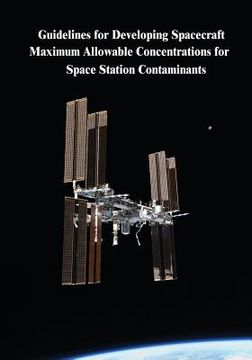Share
Guidelines for Developing Spacecraft Maximum Allowable Concentrations for Space Station Contaminants (in English)
National Aeronautics and Administration
(Author)
·
Createspace Independent Publishing Platform
· Paperback
Guidelines for Developing Spacecraft Maximum Allowable Concentrations for Space Station Contaminants (in English) - Administration, National Aeronautics and
$ 15.99
$ 19.99
You save: $ 4.00
Choose the list to add your product or create one New List
✓ Product added successfully to the Wishlist.
Go to My WishlistsIt will be shipped from our warehouse between
Friday, June 21 and
Monday, June 24.
You will receive it anywhere in United States between 1 and 3 business days after shipment.
Synopsis "Guidelines for Developing Spacecraft Maximum Allowable Concentrations for Space Station Contaminants (in English)"
The National Aeronautics and Space Administration (NASA) is preparing to launch a manned space station---Space Station Freedom--by the mid-1990s. Because Space Station Freedom will be a closed complex environment, some contamination of its atmosphere is inevitable. Several hundred chemicals are likely to be found in the closed atmosphere of the space station, most in very low concentrations. Important sources of atmospheric contaminants include metabolic waste products of crew members and off-gassing of cabin materials and equipment. Release of chemicals from experiments performed on board the space station is also a possible source of contamination, and the water reclamation system has the potential to introduce novel compounds into the air. NASA is concerned about the health, safety, and functional abilities of crews exposed to these contaminants. This report, prepared by the Committee on Toxicology of the National Research Council's Board on Environmental Studies and Toxicology, is in response to a request from NASA for guidelines to develop spacecraft maximum allowable concentrations (SMACs) for space-station contaminants. SMACs are used to provide guidance on allowable chemical exposures during normal operations and emergency situations. Short-term SMACs refer to concentrations of airborne substances (such as gas, vapor, or aerosol) that will not compromise the performance of specific tasks during emergency conditions lasting up to 24 hr. Exposure to 1- or 24-hr SMACs will not cause serious or permanent effects but may cause reversible effects that do not impair judgment or interfere with proper responses to emergencies such as fires or accidental releases. Long-term SMACs are intended to avoid adverse health effects (either immediate or delayed) and to avoid degradation in crew performance with continuous exposure in a closed space-station environment for as long as 180 days. Chemical accumulation, detoxification, excretion, and repair of toxic insults are thus important in determining 180-day SMACs.
- 0% (0)
- 0% (0)
- 0% (0)
- 0% (0)
- 0% (0)
All books in our catalog are Original.
The book is written in English.
The binding of this edition is Paperback.
✓ Producto agregado correctamente al carro, Ir a Pagar.

